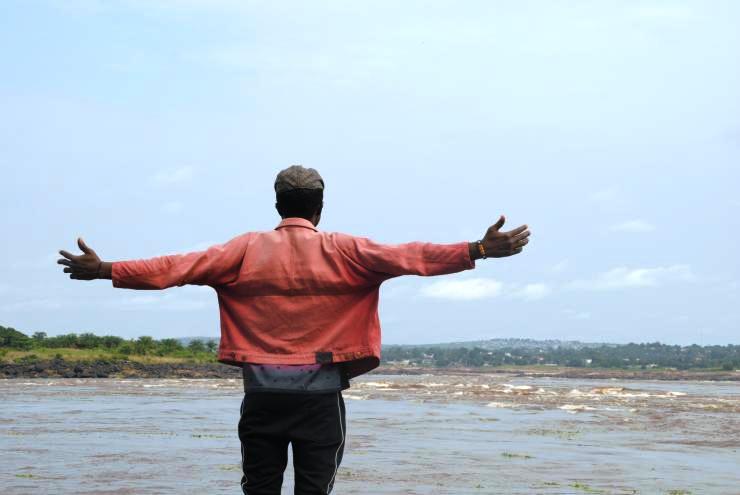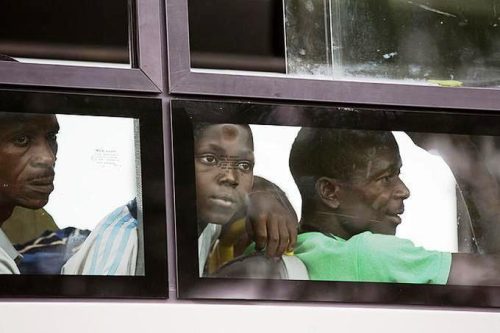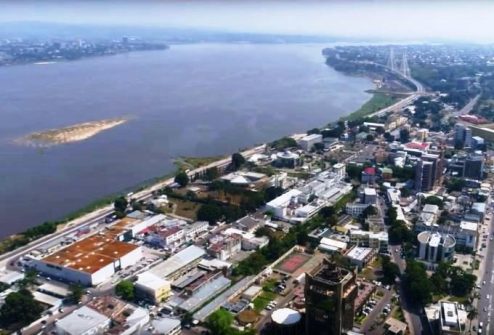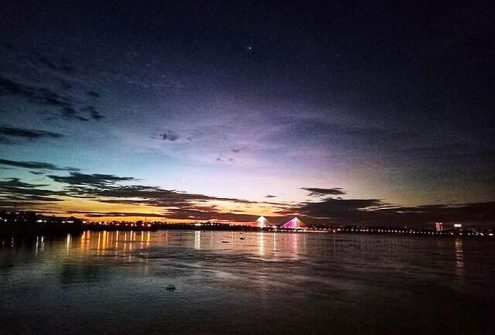A Bridge in 2028?

“Ebale ya Congo ezali lopango te, ezali nzela” (The Congo River is not a barrier, it is a road), sang the famous Congolese musician
Joseph Kabasele.
Today this statement must be taken with a pinch of salt. People have strong cultural and linguistic ties, but access to capital is no longer automatic. Over time, the river has become a difficult wall to cross, and relationships are increasingly similar to those of ‘cat and mouse’.
We remember, for example, the operation ‘Mbata ya bakolo’ (the slap of the elderly), which took place in 2014. The Brazzaville police violently and brutally forced back more than 100,000 ‘Zairians’ in Kinshasa.
The Congolese from the Democratic Republic of Congo were accused of various crimes, including not having valid documents.
Some of them had lived in Brazzaville for more than 30 years and had already started families.

DRC citizens deported from Brazzaville wait to be transferred to their place of origin in a transit camp in Maluku, the 23rd of May 2014. © MONUSCO/Sylvain Liechti
This operation had a before and after. It had led to the closure of the borders between the two countries and had contributed to the cooling of relations, and even mistrust, between the two capitals. Authorities on both sides of the border had also tightened conditions for crossing. Relations stabilized only in 2019 after long negotiations between the two governments.In 2020, the Covid-19 pandemic led to the closure of the borders between the two capitals, reducing the number of visitors from Kinshasa to Brazzaville and vice versa.
Two years later in February 2022, the governments of Kinshasa and Brazzaville announced the reopening of the river and land borders.
Crossing the river on a half-hour boat costs between $25 and $30. Add to this the harassment of government officials, especially in Kinshasa. This makes the step even more difficult, which has remained a prerogative of the rich. The river, which once linked the economies of the two cities, is now subject to a border regime which is costly for the population. To get to the other shore, citizens often use rudimentary boats, so accidents are not uncommon.
The road and rail bridge project
The project to build a bridge connecting Brazzaville and Kinshasa dates back more than thirty years. Since then, many conferences have been organized and campaigns launched to explain the benefits for people on both sides of the river. Cédric Kalala, a border police officer in Kinsuka, Kinshasa, looks forward to the completion of the project: “This bridge would be of great help to us. The Congolese on the other side of the river are not just our neighbours, they are our brothers. In Brazzaville and Kinshasa, it is difficult to distinguish between those who come from Kinshasa and those from Brazzaville, because we speak the same languages: Lingala and French. If the authorities built a bridge over this river, it would facilitate trade between us. Furthermore, the bridge would not only reduce the cost of the crossing but also the risk of shipwrecks that we see on the river. People could walk to and from Brazzaville to visit their family. For the people of Brazzaville, the dream of this bridge is the same”, says Cédric.

Brazzaville. The construction of this bridge is part of the Central African States Partnership (CEAC).
CC BY 3.0/Creative Studio
On 11 November 2019, Congolese leaders from both sides of the river signed an agreement in Johannesburg, South Africa, for the financing and implementation of the project. The estimated cost was at least $600 million. The 1,575-meter-long bridge will include a railway, a dual carriageway, pedestrian pathways, and a border control post on each side. Work was scheduled to begin in August 2020, but has now been postponed to 2024, while commissioning is scheduled for 2028.
The construction of this bridge is part of the Central African States Partnership (CEAC). It offers a number of advantages. It would make trade between the two capitals more fluid, facilitate the import and export of goods between Matadi and Pointe-Noire and harmonize immigration procedures between the two countries.

View of the Brazzaville Bridge from Kinshasa. CC BY-SA 4.0/ Kimmyfari
The project also falls under the New Partnership for Africa’s Development (NEPAD) framework for Africa’s connectivity overall. It would guarantee the continuity of the transport system along the Tripoli (Libya) – Windhoek corridor, which crosses Chad, Cameroon, the two Congos, and Angola. Experts estimate that traffic, currently around 750,000 passengers and 340,000 tons of cargo per year, would increase to more than 4 million passengers and 3 million tons of cargo per year. This could boost the economies of the beneficiary countries.
(Open Photo: Lwanga Kakule)
Lwanga Kakule



